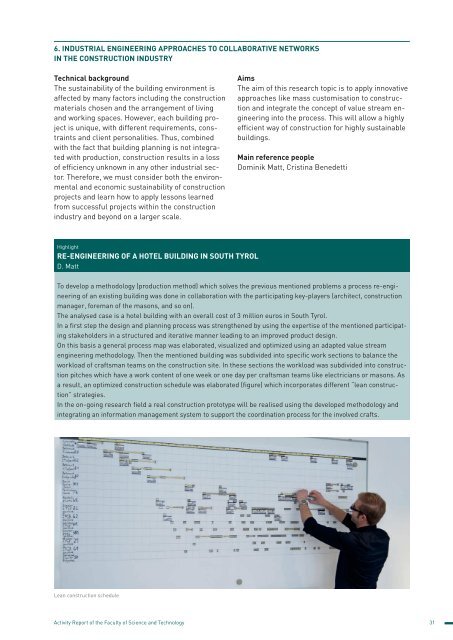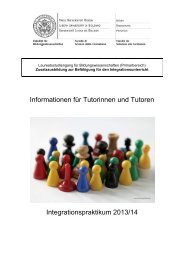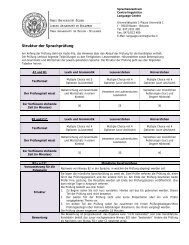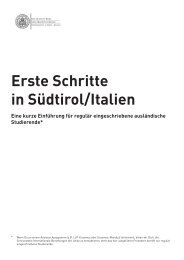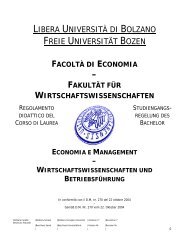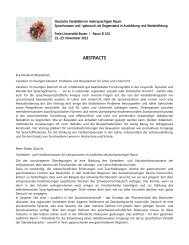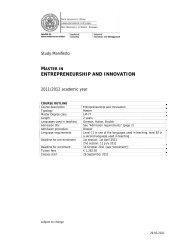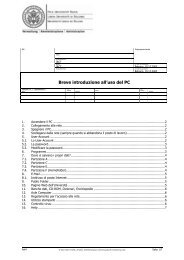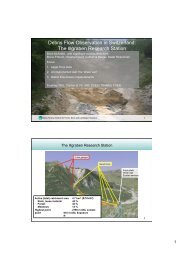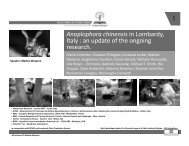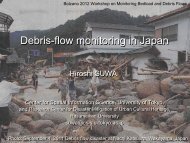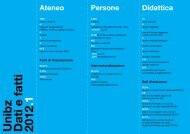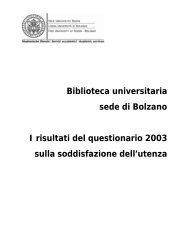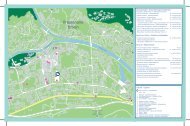Activity report - Free University of Bozen · Bolzano
Activity report - Free University of Bozen · Bolzano
Activity report - Free University of Bozen · Bolzano
You also want an ePaper? Increase the reach of your titles
YUMPU automatically turns print PDFs into web optimized ePapers that Google loves.
6. Industrial engineering approaches to collaborative networks<br />
in the construction industry<br />
Technical background<br />
The sustainability <strong>of</strong> the building environment is<br />
affected by many factors including the construction<br />
materials chosen and the arrangement <strong>of</strong> living<br />
and working spaces. However, each building project<br />
is unique, with different requirements, constraints<br />
and client personalities. Thus, combined<br />
with the fact that building planning is not integrated<br />
with production, construction results in a loss<br />
<strong>of</strong> efficiency unknown in any other industrial sector.<br />
Therefore, we must consider both the environmental<br />
and economic sustainability <strong>of</strong> construction<br />
projects and learn how to apply lessons learned<br />
from successful projects within the construction<br />
industry and beyond on a larger scale.<br />
Aims<br />
The aim <strong>of</strong> this research topic is to apply innovative<br />
approaches like mass customisation to construction<br />
and integrate the concept <strong>of</strong> value stream engineering<br />
into the process. This will allow a highly<br />
efficient way <strong>of</strong> construction for highly sustainable<br />
buildings.<br />
Main reference people<br />
Dominik Matt, Cristina Benedetti<br />
Highlight<br />
Re-engineering <strong>of</strong> a hotel building in South Tyrol<br />
D. Matt<br />
To develop a methodology (production method) which solves the previous mentioned problems a process re-engineering<br />
<strong>of</strong> an existing building was done in collaboration with the participating key-players (architect, construction<br />
manager, foreman <strong>of</strong> the masons, and so on).<br />
The analysed case is a hotel building with an overall cost <strong>of</strong> 3 million euros in South Tyrol.<br />
In a first step the design and planning process was strengthened by using the expertise <strong>of</strong> the mentioned participating<br />
stakeholders in a structured and iterative manner leading to an improved product design.<br />
On this basis a general process map was elaborated, visualized and optimized using an adapted value stream<br />
engineering methodology. Then the mentioned building was subdivided into specific work sections to balance the<br />
workload <strong>of</strong> craftsman teams on the construction site. In these sections the workload was subdivided into construction<br />
pitches which have a work content <strong>of</strong> one week or one day per craftsman teams like electricians or masons. As<br />
a result, an optimized construction schedule was elaborated (figure) which incorporates different “lean construction”<br />
strategies.<br />
In the on-going research field a real construction prototype will be realised using the developed methodology and<br />
integrating an information management system to support the coordination process for the involved crafts.<br />
Lean construction schedule<br />
<strong>Activity</strong> Report <strong>of</strong> the Faculty <strong>of</strong> Science and Technology 31


